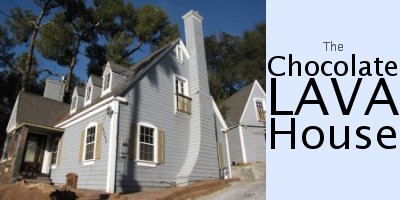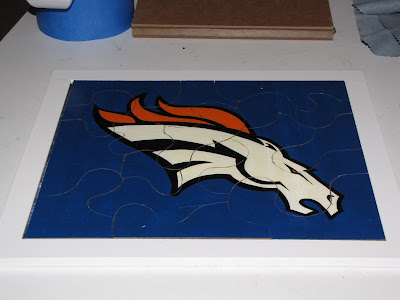Last October, I decided I would take a stab at making my own ornaments for my family. First, I designed what I wanted them to look like. I used Microsoft Word, so nothings to scale and I made some design tweaks when I actually made them. I decided to use silver sequins of varying size, white pearl beads, seed beads, silver stick pins, and black velvet ribbon.
 And copious amounts of GLUE. Now, before I started on the first ornament, I had a healthy appreciation for the beautiful ornaments my grandmother so lovingly created. As my calloused thumb pushed the final pin into the final ornament, I had a healthy appreciation for the dedication and pure insanity of my grandmother. Wowie wow wow. It took me something like three weeks to make all of the ornaments. I figure I worked on them about 2-3 hours a day, 5 days a week. Wowie wow wow. And I'm not even as meticulous as my grandma was! I didn't CARE if there were exactly the same number of pearls on each ornament! She would count beads and measure distances! Sheesh. I also discovered that not many craft/hobby stores carry a decent selection of Styrofoam shapes and sequins. I bought out the entire selection of sequins and push pins at two different Joanns and had to go back two more times. Sheesh!
And copious amounts of GLUE. Now, before I started on the first ornament, I had a healthy appreciation for the beautiful ornaments my grandmother so lovingly created. As my calloused thumb pushed the final pin into the final ornament, I had a healthy appreciation for the dedication and pure insanity of my grandmother. Wowie wow wow. It took me something like three weeks to make all of the ornaments. I figure I worked on them about 2-3 hours a day, 5 days a week. Wowie wow wow. And I'm not even as meticulous as my grandma was! I didn't CARE if there were exactly the same number of pearls on each ornament! She would count beads and measure distances! Sheesh. I also discovered that not many craft/hobby stores carry a decent selection of Styrofoam shapes and sequins. I bought out the entire selection of sequins and push pins at two different Joanns and had to go back two more times. Sheesh!
But, as I pushed the last pin in, I was very proud of the ornaments, and I know my siblings, parents, and aunt and uncle will appreciate them.
The basic design of the ornaments stayed the same; I just changed the colour of the seed bead to reflect the favourite colour of the recipient. My mom said she preferred ruby, emerald, and Sapphire, while my dad preferred emerald.



John's was in his Broncos colours.









 Not too shabby, and I was awefully proud of it, if I do say so myself. Now that my brother is enjoying his Christmas present (so I shipped it off 5 months late? So what!), I decided to post about it. And then I also decided to make another one, for a Secret "Santa" exchange at an online community. I made a few reasonable changes in my method to accommodate the insane amount of time it took me to complete my brother's puzzle, and documented the procedure for posterity (certainly not for prosperity).
Not too shabby, and I was awefully proud of it, if I do say so myself. Now that my brother is enjoying his Christmas present (so I shipped it off 5 months late? So what!), I decided to post about it. And then I also decided to make another one, for a Secret "Santa" exchange at an online community. I made a few reasonable changes in my method to accommodate the insane amount of time it took me to complete my brother's puzzle, and documented the procedure for posterity (certainly not for prosperity). I cut off large chunks of wood using the band saw, to make it easier to cut the pattern on the scroll saw. Also because I like the band saw, and never use it. It looked lonely, shoved off in the corner of the garage.
I cut off large chunks of wood using the band saw, to make it easier to cut the pattern on the scroll saw. Also because I like the band saw, and never use it. It looked lonely, shoved off in the corner of the garage. 

 And it did! Next was sanding. First I used the random orbital sander with 80grit and then 150grit sand paper. I did both sides of the tree form.
And it did! Next was sanding. First I used the random orbital sander with 80grit and then 150grit sand paper. I did both sides of the tree form. Then I broke out the paper and sanding pads, in 80, 100, and 150 grits to sand the outside edges of the tree, as well as the base.
Then I broke out the paper and sanding pads, in 80, 100, and 150 grits to sand the outside edges of the tree, as well as the base. Sanding pads make sanding curves SO much easier. The person who first thought of them is my hero. I only wish I'd had them when I was
Sanding pads make sanding curves SO much easier. The person who first thought of them is my hero. I only wish I'd had them when I was 








